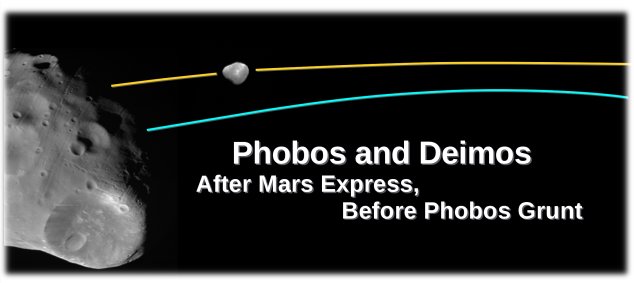With support of
 Home
Team
Dates/Schedule
Publications
Home
Team
Dates/Schedule
Publications
Proposal Summary
In 1877, Asaph Hall, an astronomer at the United States Naval
Observatory, discovered that Mars is accompanied by two satellites,
Phobos and Deimos. The origin of the two has remained uncertain to the
present day. A Martian origin has been difficult to model and to match
to their spectra, but models for their capture also have major
shortcomings. Spectral signatures and the overall low density suggest
that Phobos (the larger of the two) has a composition similar to
carbonaceous chondrites and therefore raises the possibility that
Phobos contains a large fraction of volatiles. US, Russian, and other
space mission planners have identified Phobos as a target, from where
the recovery of extraterrestrial samples may be comparably
straightforward. Mars Express, currently the only Mars spacecraft to
carry out Phobos flybys, has returned new data on Phobos, including
imagery, spectral data, and gravity field measurements. The next step
of Phobos study is the Phobos sample return mission (Phobos Grunt)
which is under development by the Russian space agency. There are other
suggestions for missions to study Phobos and Deimos in USA and Europe.
We propose workshops including astronomers, geophysicists, geologists,
cartographers, and planetary explorers from East and West to review our
present state of knowledge on this small Martian satellite, and to
discuss measurements and observations that are required to further our
understanding of Phobos.




